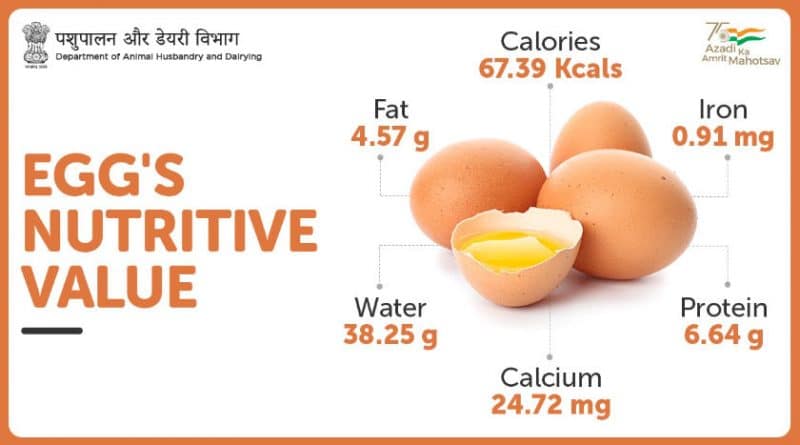Food Elements – Learn About the Nutritional Elements of Food and Healthy Eating
The purpose of consuming food is to ensure good health and wellness, and therefore, healthy eating is an essential aspect of eating every day. The requirement of food over the years changes over time, concerning the stage of life that you are in. So while a child requires food to grow and develop, adults need it more for the energy required to function daily. In addition to that, food is also required to repair the various parts of the body that are worn away or those that have had to be discarded due to wear and tear.
We tend to use various parts of our bodies with everything that we do, be it breathing, thinking, moving, playing, or working on the computer. This means that we need to be able to continuously replenish our body with a variety of elements that are present in food and drink.
The various elements of food that exist, their characteristics, how they can be used, and the right way in which specific foods should be combined to obtain maximum benefits are given below:
The Food Elements
Healthy eating is possible only when you ensure that your body is getting the right food elements in the right quantity that it requires. Therefore, it is essential to know about food nutrition to be able to make sure that you are consuming everything. Some of the food elements that you should be aware of include starch, sugar, albumen, fats, minerals, and indigestible ingredients.
These are often clubbed together to form the basic classes including carbonaceous, nitrogenous, and inorganic. While all the starches, fats, and sugars fall under the carbonaceous category, albumen is considered to be nitrogenous. All inorganic substances include all the minerals that we need for the body. It should be noted that all healthy recipes or menus should ensure that all the various categories of food are finely balanced in a meal.
Carbonaceous – All starches, sugars, and fats are covered under this category. Starch can be found in grains, most vegetables, and also in some fruits. Sugars are available in the form of cane, grape, other fruit sugars, and milk sugar (a constituent of milk). Some sugars are made in the laboratory.
Glucose, for example, is an artificial sugar that is similar to grape juice. It is made from potato or corn starch in a chemical process. However, it is not as sweet as the natural sweeteners that nature provides. Fats can be found in vegetables and animal food too. Butter and suet are examples of animal fat, but you can also find fat in plant sources like nuts, beans, and some fruits like olives too.
While fat is commonly used as a free element (as in butter) and we use it in many not-so-healthy recipes in abundance, not only is free fat difficult to consume, but it also interferes with the digestion of other foods.
Nitrogenous – Albumen in its purest form can be found in the white of an egg. The entire white of an egg is nothing but pure albumen. You can also find albumen in other animals and vegetable foods as in the case of oatmeal. Gluten closely resembles albumen and is also a nitrogenous element. It is found in rye, barley, and wheat. Casein is also a part of this class of food elements and can be found in peas and beans.
Inorganic – Almost all the foods we consume have a certain proportion of inorganic and mineral matter. Grains and milk have a large proportion of the minerals that we need daily.
Indigestible substances – These are foods that are not digestible by the body and are therefore only meant to provide bulk to the food that we eat. Bran and fibrous tissues in the body are examples of indigestible foods.
Food Element Uses
Most of the food that we eat is carbonaceous. This is something that has been proven after studying the daily eating habits of various cultures. The carbonaceous food element allows our body to produce heat, and in conjunction with other food elements, allows us to be able to use force and strength. Carbonaceous food elements also help the body replace the fatty tissue that gets used up in the process of fat burning.
While fats produce the highest amount of heat among the carbonaceous food elements, it should be remembered that these are most difficult to digest and can therefore lead to various health issues. Healthy eating deems that only the recommended proportion of fat should be included in meals daily.
The nitrogenous nutritional elements help in keeping the brain, nerves, and muscles healthy and fit. These are the food elements that ensure that you remain healthy in all respects including mental health. All healthy recipes should include a decent proportion of nitrogenous food elements to ensure that the stimulus to tissue change is provided to the body at all times, thus keeping all tissues fighting fit.
The most commonly required inorganic elements are phosphates. These provide the building blocks for bones and nerves and are therefore critical for good bone health.
Combination of Food Elements
There is a saying that ‘too much of everything is bad, and this applies to food as well. While all food elements are required by the body, each of the food elements must be consumed in a specific proportion to ensure healthy eating and healthy living. If you want to learn how to cook healthy recipes, you need to know which of the food elements are required by the body and in what quantity.
For one, the daily intake of the body should ensure 6 carbonaceous food elements to 1 nitrogenous food element. It has also been noticed that this one-sixth of nitrogenous food elements can be used up to 3 ounces in 24 hours.
So if you want to ensure that you are making healthy recipes for your family, you need to make use of this scientific knowledge about the nutritional elements to ensure that your family stays healthy and fit.



